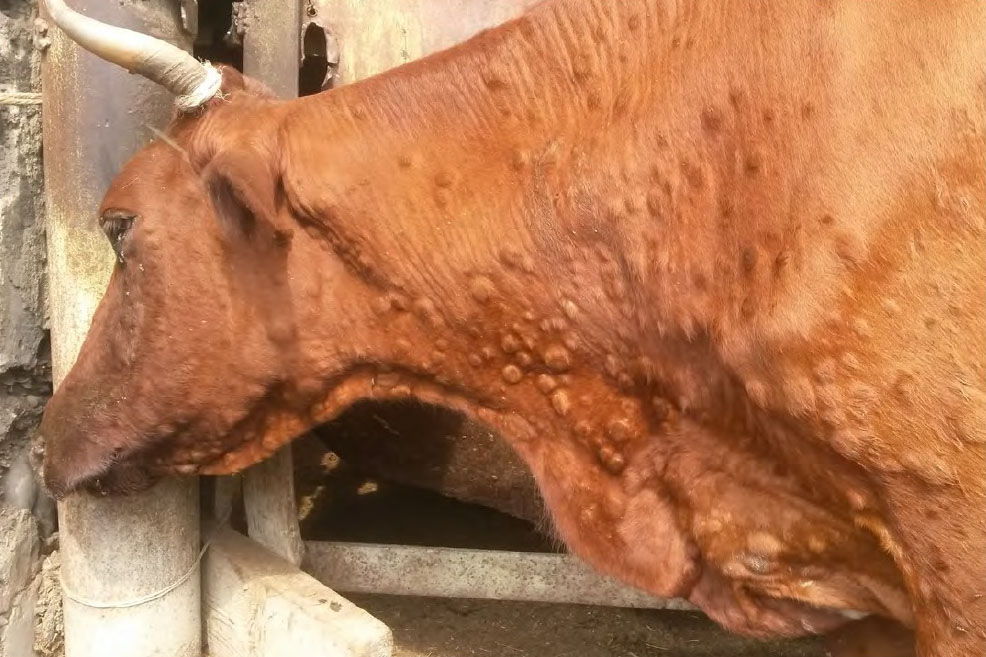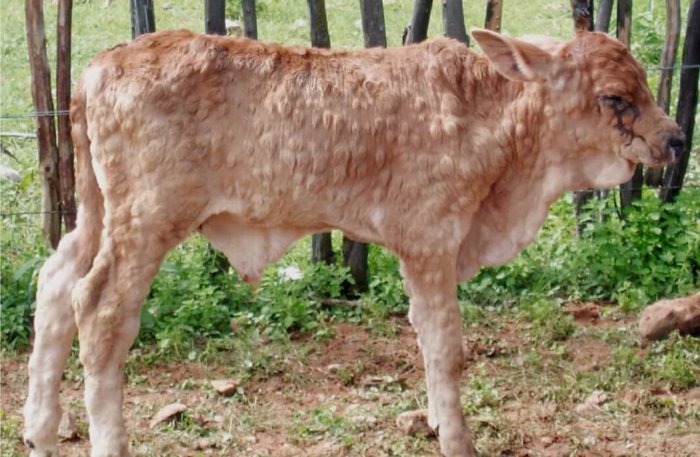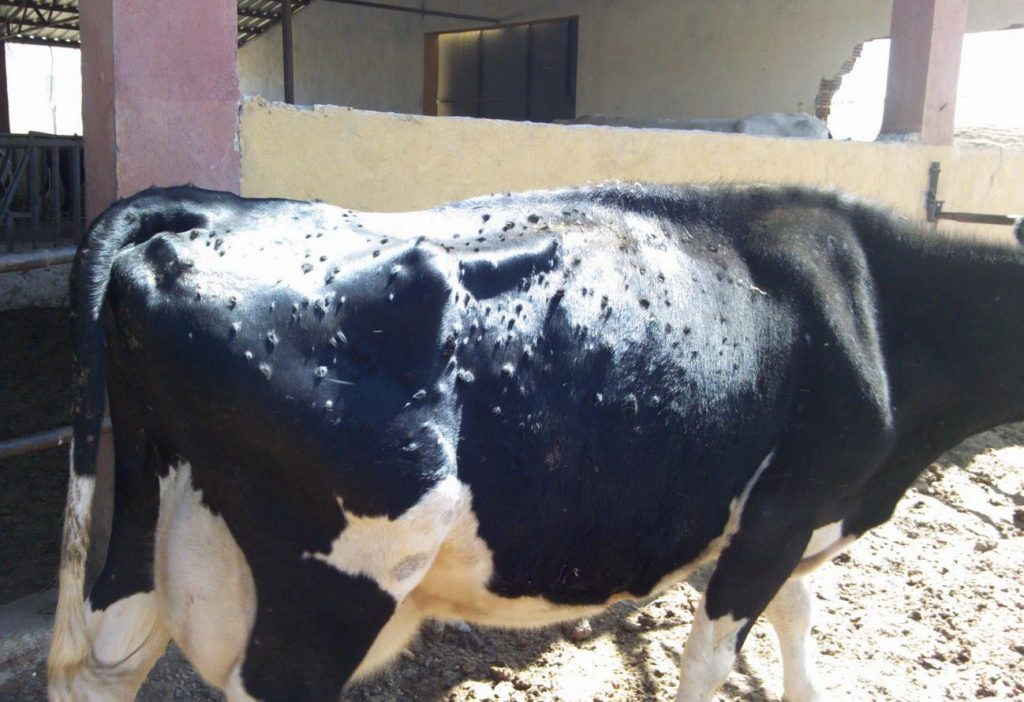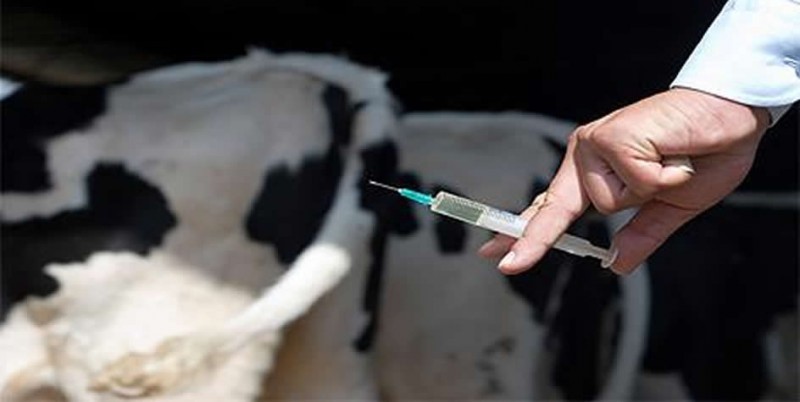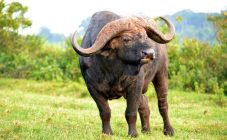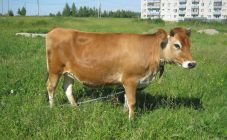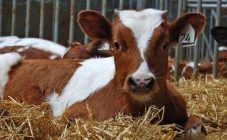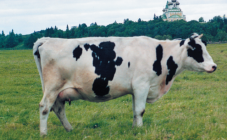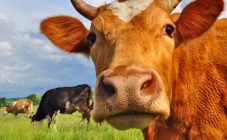Content:
This disease is very dangerous for cattle. On the territory of Russia, lumpy dermatitis in cattle is poorly spread, but it cannot be completely ruled out. The article describes in detail what this disease is and what the methods of dealing with it are.
Disease Information
The first known outbreak of the disease occurred in Rhodesia and Madagascar in 1929. 1945 - massive diseases of cattle in the Transvaal, then there were epidemics in Kenya and in 1963 - in Romania.
Currently, modular cow dermatitis is most widespread in Africa (South and East), as well as in India. On the territory of Russia, the disease was first recorded in Chechnya in 2015.
This infectious disease leads to the death of cattle in 10% of cases. The main type of damage that occurs from lumpy dermatitis is a significant decrease in meat and milk production. The quality of the raw hides produced from cattle also suffers.
The contagious disease not only alters the sex cycle of cows, but also causes sterility in bulls, albeit temporary.
In India, experts have calculated the amount of damage caused by this disease to the country's population. Its amount is 50 million rupees.
Signs of the disease
The incubation period for vesicular dermatitis after cattle is infected can vary. Its usual duration ranges from three to thirty days. In most cases, we are talking about 7-10 days.
At first, with nodular dermatitis in cattle, a sharp rise in temperature occurs. It is accompanied by a loss of appetite. At this time, you can observe strong salivation, serous mucous discharge from the nose.
After 48 hours have passed, nodules appear all over the body. They have a shape that is close to round or slightly elongated. Nodules that are firm to the touch can be seen on the chest, neck, groin, legs, head, and udder. Diameter - from half centimeters and more. Their height is approximately 0.5 centimeters. The number of entities may vary. It ranges from ten pieces to several hundred.
The nodules then change. Around the circumference, the epidermis is separated, a depression appears in the center, then tissue necrosis can be seen in this place.
After that, after a few days, the nodule dries up and then falls off. Usually this stage occurs in 7-20 days. In the future, this place is overgrown with skin and wool. In case of complications, ulcers may form in this place. They may not heal for a year or more. It is almost impossible to treat them.
In the event that a severe form of the course of an infectious disease occurs, the animal develops a fever, it greatly loses weight. At the same time, the disease affects the respiratory system, as well as the gastrointestinal tract.
Bovine lumpy skin disease can affect the eyelids and eyes. In some cases, blindness of the animal may be one of the consequences of the disease. If edema occurs in the lungs, it leads to death by suffocation.
In a sick animal, the lymph nodes are enlarged and can be easily felt.
Milk from infected cattle takes on a clearly visible pinkish tint. During milking, the cow feels pain, and the milk does not flow in a stream, as usual, but in separate drops. If the milk is heated, it looks like a gel.
Features of infection
The causative agent is a virus, which scientists refer to as DNA-containing. One of the varieties is close in its biological characteristics to the causative agents of smallpox in goats.
The disease is usually caused by contact with sick animals. Bovine nodular dermatitis often occurs when affected individuals are in the early, latent phase of the disease. Another possible cause of infection is those animals that have previously been ill with lumpy dermatitis, but still carry disease-causing viruses.
How many animals can get hurt at one time: When a primary infection occurs, from 5% to 50% of all animals in a herd can get sick at the same time. In some, the most unfavorable cases, 75-100% of head of cattle can be immediately infected.
Dermatitis in cows can take various forms:
- sharp;
- subacute;
- chronic.
The first one is much rarer than the other two. The most vulnerable are representatives of European cattle breeds.
From a sick animal, the external spread of the virus occurs along with pieces of skin, saliva, sperm or blood that are infected with viruses. Moreover, even in recovered animals, the danger of infection is present for some time after all signs of the disease have passed.
When animals recover
In the affected areas, the hair falls out, the skin cracks and comes off in patches. The situation is gradually changing. Over time, the nodules disappear, the skin on them heals, the coat is also restored. Recovered animals have an increased likelihood of tracheitis, pneumonia. In cows, the sexual cycle stops for 4-6 periods, the bulls temporarily become sterile.
Description of treatment and prevention methods
One of the effective means in the fight against the disease in question is the use of a vaccine. It is made on the basis of goat pox strains. Vaccination is done, according to the instructions, with subcutaneous injections. In most cases, its action does not cause any symptoms. However, in 10% of animals, minor manifestations of the disease occur, which disappear after two weeks.
The vaccination procedure is carried out in two stages. The second time it is done after two weeks have passed after the first vaccination.
The vaccination period is one year. After this time, you must repeat this procedure.
It is impossible to completely prevent the risk of infection, however, applying various measures, it is quite possible to reduce this probability.
The following events need to be recorded in the memo:
- Try to reduce dampness in the barn. The drier the room is, the less opportunities there will be for blood-sucking insects to live.
- If you treat not only animals, but also their stalls with repellents that repel blood-sucking insects.
- It is necessary to monitor the cleanliness of the herd. In particular, it is recommended to avoid animals of unknown origin. This is due to the fact that they can become a source of infection with lumpy skin disease.
- In the fight against the disease, it can help if regularly examine the herd with the help of veterinarians.
At the time of the fight against the disease, it will help if restrictions are established:
- on the movement of herd animals;
- for visiting cattle by strangers;
- in relation to the execution of the slaughter and sale of meat.
If a farmer is faced with the fact that a case of a disease has been recorded in his herd, then, unfortunately, one will have to take into account that no drugs have been developed that will completely cure the animals. Therefore, a reasonable measure would be to eliminate them.
However, since the disease can provoke secondary diseases, they must also be combated. Antibiotics can also be used to alleviate the situation, although they cannot cure lumpy skin disease. The use of Bicillin can alleviate the manifestations of the disease, but will not cure it.
How to deal with illness
Since there are currently no reliable and effective treatments for this disease, the following can be done to combat it:
- Vaccination.
- Implement preventive measures that reduce the likelihood of getting sick in cattle.
- Sick animals should be isolated as quickly as possible. If they are kept separately, and they become healthy, then they can be used in the future, but their value due to the transferred dermatitis will decrease.
- Sick animals can be isolated and then slaughtered.
- Since secondary diseases occur, in some cases it is possible to treat them.
The main options are listed here, but it must be understood that keeping sick animals, the value of which has greatly decreased, is a very costly business, therefore the second of the listed options is ineffective.
This disease, although, in most cases, is not fatal, but causes great harm to the farmer. Since there are no effective treatments, the main ways to fight the disease are through vaccination and various preventive measures.
